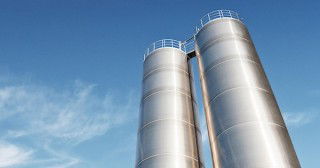Since being privatised in 2001, the Lukavac cement plant in Bosnia-Herzegovina has seen a number of major investments. In more recent years, the focus has been on fine-tuning existing equipment to increase the plant’s share of alternative fuels usage to over 70 per cent. By Lukavac Cement, Bosnia-Herzegovina.
The Lukavac cement plant in northern Bosnia-Herzegovina was privatised in 2001 by the company ALAS (now Asamer Baustoffe AG) which has invested more than EUR130m over four phases. During the first three phases a new kiln line was installed, together with a cement mill, coal mill, raw mill, homogenisation silo, coal homogenisation storage with an unloading system, five-stage preheater with precalciner, clinker cooler, clinker transport, clinker silo and two packaging lines with a fully-automated loading system. Since 2010 most of the capex has been focussed on the areas of alternative fuels (AF) usage and environmental performance.
Between 2012-17 the calciner was reconstructed to allow for more retention time and an AF storage facility was built, in addition to the installation of an SNCR system. In 2019 an AF dosing system for the main burner was installed, together with a storage hall, fully-automated RDF handling equipment, belt tube conveyor and an AF weigh tube. As part of the aforementioned installation works, two new burners with AF dosage capabilities were also added. The bypass system was extended from five to 10 per cent. The energy distribution of the clinker line was 60 per cent at the precalciner and 40 per cent at the main burner. AF utilisation at the precalciner stage was seen as the next logical step.
